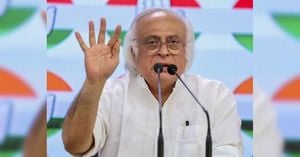The recent fluctuations of the Russian ruble against the US dollar and other foreign currencies have raised considerable interest among economists and the public alike. On February 12, 2023, the dollar's exchange rate plummeted below 94 rubles on the interbank market. Such declines have significant implications for everyday transactions, particularly for citizens making purchases or investments involving foreign currencies.
On this day, the dollar was trading at 92 rubles at its lowest point, prompting many to speculate it could be the optimal moment for buying dollars, as reported by Bankiros.ru. At the same time, various banks offered competitive buying rates for the dollar, with Aвангард leading the way at 96.8 rubles. This means Russian customers could obtain $100 for 9,680 rubles. Other major banks, including Юнистрим and СберБанк, also provided attractive rates at around 97 rubles, allowing customers to purchase $100 for about 9,700 rubles.
Simultaneously, the Central Bank of Russia set its official exchange rate for the dollar at 95.8024 rubles, demonstrating a slight decline from previous rates according to multiple reports. Specifically, the euro also lost value, settling at 99.1953 rubles, and the Chinese yuan was priced at 13.0258 rubles. This new currency information highlights how currency stabilization efforts may influence purchasing power and market dynamics within Russia.
Such fluctuations do not happen without reason. Experts like Vadim Kovrigin, Associate Professor at the Plekhanov Russian University of Economics, discussed the underlying causes for the dollar's drop against the ruble, pointing out potential market factors at play during this period. The reasons for these fluctuations often stem from broader economic trends, including shifts within the global market and internal economic conditions affecting Russia.
For those considering selling their dollars, multiple banks provided competitive rates as well. The Азиатско-Тихоокеанский Банк set its buyback rate at 98.55 rubles, and Юнистрим at 98.5 rubles, offering reasonable returns for those wanting to exchange their cash.
With these recent calls to action, it is evident many Russians are evaluating their foreign currency exchanges to take advantage of the fluctuated rates. This wave of financial activity is especially noteworthy as many seek to hedge their bets against potential rises in currency value or impending economic policies set forth by the government or economic forums.
At the same time, the broader economic picture may suggest potential long-term trends. With the ruble's recent modest strengthening, some economists speculate the balancing effects this could bring about. For example, the drop could safeguard Russian industries reliant on imports by temporarily boosting their competitiveness on foreign markets, as they secure goods at lower prices.
Despite the dips witnessed, the market fluctuates, and as daily exchange rates update, consumers remain encouraged to keep close tabs on changing trends. The importance of monitoring these rates actively cannot be understated, especially as economists suggest this could signal long-term economic instability or recovery, depending on future developments.
Moving forward, it appears the situation is fluid, with exchange rates likely to shift continually. Russian consumers interested in currency transactions are encouraged to stay informed about the latest financial insights and exchange rates through reliable financial news outlets.
Overall, the recent exchange rate changes of the ruble reaffirm the market’s unpredictable nature. Whether one is buying or selling currency, engaging with the current trends will be key, as these rates promise to evolve alongside Russia's economic situation.



